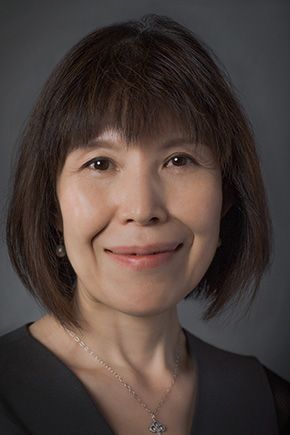Orchestrating a Life Sciences Ecosystem Where Everyone is an A-Player: Insights with Landmark Bio’s Ran Zheng
In this installment of the Harvard Business School Healthcare Alumni Association (HBSHAA) Q&A series, Landmark Bio CEO Ran Zheng talks to Michael Wong about the value of collaboration over competition with best-in-class partners.
Michael Wong: Scan through nearly any life science firm’s annual report and there will be the inevitable reference to a strategic plan of collaborating with academia, government and other “ecosystem” partners. Still, how does one deploy a governance model where every entity (Harvard, MIT, et. al.)1 is perceived as best-in-class in one manner or another; and are used to competing… and winning in their daily operating model?
Ran Zheng

Ran Zheng: What is great about this team is that each partner understands that to turn cutting-edge research into breakthrough medicine and change the current healthcare paradigm from treatment to cure and prevention; no single entity alone can tackle the grand challenges in therapeutic development and manufacturing.
Landmark Bio is built on the strength of academia, industry, hospitals and research institutions. The unique formation allows us to explore and act on the areas where the convergence of our capabilities and experience can make a huge difference. As manufacturing of novel modalities is quite complex, having Harvard and MIT at our table means that we are able to attract world-class talent who have skills which are highly coveted. By curating innovative engineering research of MIT, prototyping through Cytiva’s platform, and tapping into Landmark Bio’s ability to test drive those new technologies on the emerging therapeutics originated from Harvard and their research hospitals and institutions; we create an effective engagement model which A-players crave to develop cell and gene manufacturing solutions.
With Landmark Bio’s remit of becoming a new center for advanced manufacturing for genetic medicines (intended to ease bottlenecks slowing progress toward new disease-fighting strategies such as cancer immunotherapy, gene and stem cell therapy, and CRISPR/Cas9 editing), what’s the playbook to convert this vision into a reality?
While many Harvard Business School case studies often stress the importance of speed, our founding partners deliberately elected to ring-fence time during the early days to identify and define the problems in order to develop the right solutions that will maximize the impact a venture like this has on the life sciences ecosystem.
As we embark on our journey, we continue to refine our thinking, create a compelling vision and develop a sound business strategy that can be understood, valued, and committed to by our team. This is the first step in our playbook.
Secondly, we need to build foundational capabilities that are critical to address today’s most pressing needs of our life sciences community while eyeing the future. We have been very intentional when it comes to the technologies we need to establish today. We are mindful in the design of our facility to make it flexible, reconfigurable and platform agnostic so we can adapt and support emerging modalities in the future. While our facility is yet to be built, we already started thinking about the digital roadmap for Landmark Bio. Unlike some companies which are striving to build these capabilities in-house but are saddled with legacy systems built over the years, Landmark Bio’s blank canvas enables us to have critical debates about digital capabilities, prioritize and sequence the implementation of the best technologies that deliver significant benefit to our business now and lay the foundation for the future. The challenges for a start up is that we have to build everything from the ground up, but that’s the beauty of a start up as well. We have a blank canvas in the front of us and we are painting the future.
Finally, while a business plan anchored with a clear vision, mission and strategies are important, Landmark Bio’s people and culture will differentiate us from others. We are creating the best place to attract, engage, develop and retain the diverse talent that bring their shared purpose and unique strength to work everyday, make their marks, and grow with the company.
Ran Zheng is CEO of Landmark Bio. Ms. Zheng most recently served as Chief Technical Officer at Orchard Therapeutics, a commercial-stage global gene therapy company specializing in hematopoietic stem cell-based gene therapies. She has also held leadership positions at several major biotechnology companies including Genzyme (now Sanofi) and Amgen.
Michael Wong is an Emeritus Board Member of the Harvard Business School Healthcare Alumni Association.
Note
1. Besides Harvard and MIT, other members of the project partnership include Fujifilm Diosynth Biotechnologies, Cytiva, and Alexandria Real Estate Equities. Additional collaborating institutions include Massachusetts Life Sciences Center, Beth Israel Deaconess Medical Center, Boston Children’s Hospital, Brigham and Women’s Hospital, the Dana-Farber Cancer Institute, Massachusetts General Hospital, and the Commonwealth of Massachusetts.
The Misinformation Maze: Navigating Public Health in the Digital Age
March 11th 2025Jennifer Butler, chief commercial officer of Pleio, discusses misinformation's threat to public health, where patients are turning for trustworthy health information, the industry's pivot to peer-to-patient strategies to educate patients, and more.
Navigating Distrust: Pharma in the Age of Social Media
February 18th 2025Ian Baer, Founder and CEO of Sooth, discusses how the growing distrust in social media will impact industry marketing strategies and the relationships between pharmaceutical companies and the patients they aim to serve. He also explains dark social, how to combat misinformation, closing the trust gap, and more.